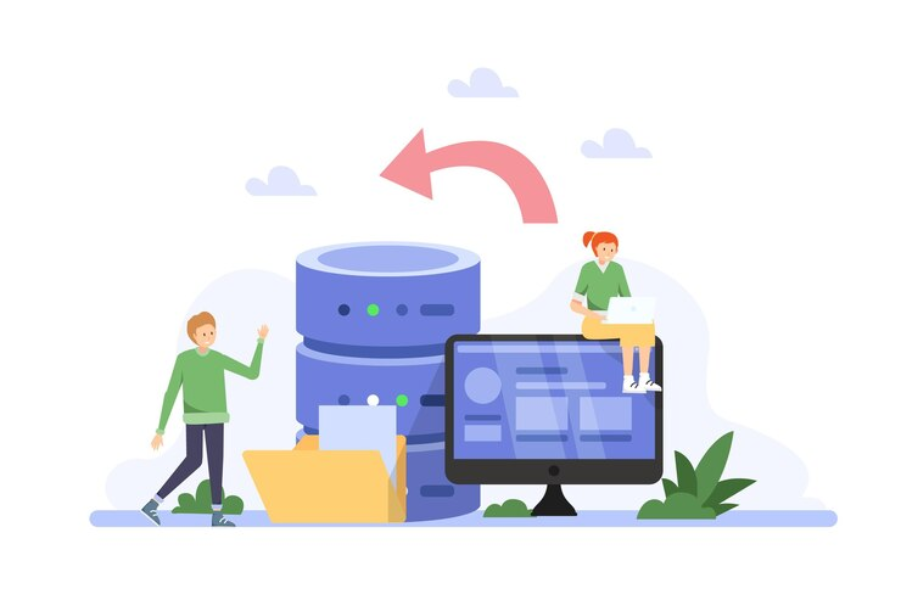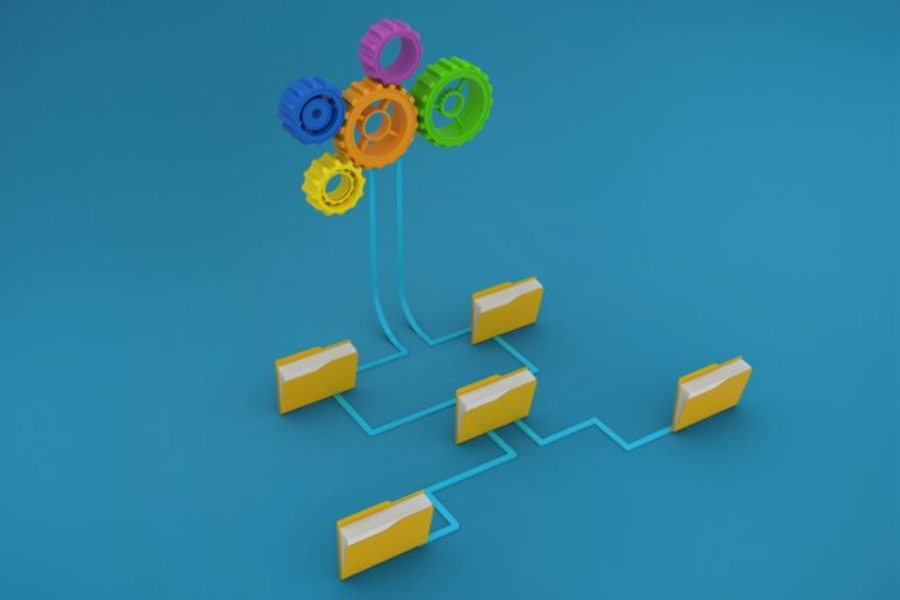Your website is one of your biggest assets today – and faster loading speeds are a matter of course. If you want faster loading speed for your e-commerce websites, look into the website cache. This little tweak carries a lot of impact.
But what is website caching exactly? How will it help you? This article will discuss managing website caching for your Filipino online store. Let’s dive right in.

What Is Website Caching: The Basics
Internet load speed is something that people overlook when a site is working well. Still, when it doesn’t, it tends to catch site visitors’ attention.
Think back on the last time that you opened a webpage to shop. You were probably excited about what you wanted to look for. Thus, you might not have noticed the loading screen at all.
But what if the website didn’t load immediately? A loading screen lasting a couple of seconds is enough to shift your emotions. Excitement turns to boredom, then to frustration.
The same is true for your potential customers. According to Google, page loading speed contributes to page bounce rates. Bounce likelihood increases to 32% as loading times climb to 3 seconds.
So, what can you do about it as an online store owner? Website caching is a technology used to counter this issue.
A web cache is a standard process to improve loading times. You store data and static web content on the client or server side. This storage is called a memory cache. It’s ideal for frequently used data, such as:
- HTML pages
- Images
- Files
- Multimedia content, and
- Temporary files, among others.
With this, your website will have fewer things to call over the Internet. The end result? Faster load times.
To understand better what cache is and how it works, let’s delve deeper into this technology.
Understanding How Website Cache Works
Imagine you’re at a large library looking for a specific book.
The first time you go, it takes some time because the librarian has to check the system. They’ll walk through several aisles and finally fetch the book for you.
Visiting a website without caching is similar. The browser has to fetch the information you want from the server each time you ask for it, which takes time.
Say the librarian remembers you and the book you often ask for. Instead of going through the entire process, the librarian keeps your book at the desk (the cache location). The librarian immediately hands you the book the next time you come in.
This is what caching does for websites. Your computer itself stores elements like images, texts, and website templates.
Computers can store data in different places:
- On the cache client side (the browser accessing the site);
- The server side (the website accessed);
- Through intermediate points (such as content delivery networks or CDNs).
Your computer doesn’t have to get all the requested data from the website’s server again. It already has the necessary data in storage space. The web page loads faster for you, making your experience smoother and more pleasant. This caching process also happens at many levels.

How Website Cache Impacts E-Commerce Performance
Granted, the website cache system is a great technology – but why should you care? How will caring about loading speeds affect your business?
This section will tackle the specific and immediate benefits for your new online store.
Let’s see some of the advantages of caching below.
Improves the Customer Experience on Your Site
Caching isn’t some niche tech hidden in your back end. Your customers feel its effects, which in turn improves your business.
In short, a good caching system makes your e-commerce website easier to navigate. This is important because when websites feel laggy, we tend to leave.
Here’s how it works:
- Faster website load speed. Load speed is one of the biggest factors for website engagement and discoverability. When websites load quickly, your customers’ experiences on your website are better. This makes them more likely to stay and shop.
- More visitors. By making the server’s job easier, more potential customers can visit the website. This makes it so much easier to grow your online shop without the friction of more site visitors.
- Improves shopping experience. A smooth and efficient website works well even during busy times. Website caches even help if there are problems with the server. This makes shopping more reliable for your customers. Filipinos love reliable websites that don’t crash, even during big sales.
Chances are, a lot of your customers in the Philippines love to shop online. Not one of them would like a slow and buggy website that crashes during peak hours. You don’t need a web expert to tell you that.
But that’s exactly what happens if you don’t do website caching right. That’s why you need to learn more about it.
Better SERP Ranking for Your Online Store
Website caching isn’t just good for your customers. It’s also good for search engines, too.
As an online business, you aspire to be among the top ten results on the SERP. But this won’t happen if your website has a lot of structural issues. Google factors in site performance in its rankings. Thus, it’s likely to award high ranks to websites that run better.
But how does caching help your site perform? Here are the specifics:
- Decreased server load. Caching reduces the work for the servers (computers that host the website). This is especially important when traffic is high, like during sales or campaigns. It ensures your website stays and runs smoothly.
- Decreased bandwidth usage. Memory caching helps to use less internet data. This saves you money and makes the website more accessible. People with slow internet or limited data plans can easily access your store.
- Better crawling by search engine. Faster websites are critical for SEO. Thus, your optimized site is more likely to attract more visitors.
Do you see how caching helps online stores run faster?
With caching, your online store handles more visitors and improves their shopping experience. This is critical if you want to gain an edge over your competitors and capture as much of the market as possible.
It’s also a great way for Google to know that you’re reliable, boosting your SEO ranking.
Other Types of Caches
There are cache types for your computer’s hardware or software components.
There’s the primary cache memory (also called L1 cache). There’s also the secondary cache memory (L2 cache). These are caches in your computer hardware.
You’ll find the L1 cache on the processor core. The L2 cache is a buffer between the RAM (random access memory) and the CPU (central processing unit).
Other hardware cache types include:
- Disk cache
- CPU cache
- GPU (graphics processing unit) cache
- Instruction cache
- Write-through cache for write operations, and more.
A cache that deals with your own computer’s data retrieval is a hardware-based cache. It helps your computer processor function better. Without it, you will have a slower main memory and a slower experience.
Implementing Cache for Dynamic and Static Content
There are different caching approaches for various types of website content.
There’s a caching method for reusing parts of the website that don’t change often (static content). You can also manage the parts that change based on what users do (dynamic content) in smart ways.
Still learning how to develop your e-commerce website? Mastering these varying approaches can help you optimize your strategy. You’ll know what to do and when.
Static Content Caching
Some parts of the website are static content.
These are things like images, CSS files (which decide how a website looks), and JavaScript files. These become static data stored on the cache location or temporary storage.
Here are some ways to cache static content:
- Use browser caching. Tell visitors’ web browsers to store data for a certain period. Thus, they don’t have to download them again each time they visit.
- Set expiration headers. These instructions tell the browser how long to remember specific files. This reduces the need to fetch them from the server.
- Leverage a content delivery network (CDN). CDNs store copies of your static content on many servers worldwide. They send it from the closest location to each visitor and speeding up loading times.
Want to use better caching systems, but don’t know where to start?
Cache rules for static content is a great first step. It’s not much, but it will give your website distinct advantages. Best of all, you won’t have to deal with the complexity of storing dynamic content.
Dynamic Content Caching
Dynamic content systems personalize and change what your Pinoy audience sees. These can be things like user profiles or search results.
Caching data like this requires you to use more sophisticated techniques. Let’s see some of them below:
- Use edge side includes (ESI). ESI caches parts of a web page, and others not. This helps for pages with static and dynamic content.
- Use cache invalidation. This updatess the cache whenever the dynamic content changes. This ensures users see the most recent version.
- Personalized caching rules. Since dynamic content varies by user, set up rules that define storing types of content. Baseing it on user behavior or profiles can help manage caching more effectively.
While dynamic content is more complex, it also gives direct advantages to web pages.
Most websites have a hybrid of static and dynamic content. Using only static content caching methods uses up bandwidth and server workload.
This is all the more true for e-commerce websites. After all, you show many products, descriptions, profile-optimized offers, and more. Online stores get the most from implementing dynamic and static data cache systems.

Different Types of Website Caching
There are different types of website caching. It depends on the type of website that you have: static or dynamic. Each serves different functions.
You should base the type of caching you use on your website’s content. It will also affect how users interact with it. But when done right, it will boost your performance.
Before you can do it, learn the most common types of website caching:
- Full page cache. This is like taking a snapshot of a webpage and keeping it ready to show anyone who asks for it. It’s best used for pages that don’t change often. You can also show it to many people without personalization.
- Object cache. This method stores parts of a webpage only, such as database queries or complex PHP objects. It’s for parts of your site that always retrieve data from the server but don’t change with every page load.
- Browser cache. This cache stores data (like images, CSS, and JavaScript) on the computer’s main memory. It also has other cache locations, although still in the computer itself. Their browser loads these files from its storage instead of downloading them again. This method is great for static content that doesn’t change often.
Knowing when and how to use each type of caching allows for a tailored approach. Each type of caching has its own benefits and use cases. You can even use them together to maximize your website’s performance.
The correct caching strategies ensures that websites are efficient, robust, and quick. This keeps visitors happy and engaged.
Server-side Caching vs. Client-side Caching
There are two main types of caching methods: server-side caching and client-side caching.
Each plays a vital role in enhancing website performance, especially for e-commerce sites. In the e-commerce game, speed equals sales.
Learning these types of caching methods teaches you how to make the most of them.
Server-side Caching
This stores website content on the web server – where your computer stores your website.
When someone visits, the server delivers a stored copy. It won’t have to generate each page from scratch. This way, it is much faster.
E-commerce websites gain the most from this approach. This is because there are parts of a website that don’t change often, such as product listings.
Server-side caching involves configuring the web server. You can also use tools designed to work with your website’s backend technology.
Also, you can use plugins in your CMS or custom caching solutions for more specific needs. Speak to your webmaster or ask a professional for guidance on what you need.
Another option is to consider using a headless CMS that allows you to use server-side caching.
Client-side Caching
Client-side caching happens on the visitor’s browser.
For a first time website visit, client side caches store elements on your device. Whether you’re using a computer or a mobile device, there will be caches on each of them. Things like images, CSS, and JavaScript files are here.
The next time you visit, your browser loads those elements from its cache. There’s no need to download them again.
Using this caching involves setting HTTP headers. These codes instruct browsers how long to store the cached content. Find these on your website’s server configuration or content delivery network settings.

Considerations for E-commerce Websites
A robust website caching system makes your business website run faster and better.
Moreover, this also improves the shopping experience and boost sales. But you don’t execute these strategies without due consideration. You need to determine your business needs and goals, and go from there.
Keep these in mind when designing your website’s caching system:
- Balancing dynamic and static content. Your sites will have a mix of dynamic and static content. Figuring out how to cache static content. Meanwhile, ensure you update dynamic content correctly. Also, accuracy is key for ecommerce elements, like stock levels or prices.
- User experience. Tailoring the caching strategy to enhance your user experience is crucial. This means ensuring that pages load fast and users see the most current versions.
- Cache invalidation. Know when and how to clear the cache (cache invalidation). This ensures you update the information to your customers immediately. For example, your product information or stock levels can change. Invalidating the current cache and starting a new one saves your customers trouble.
- Scalability. As your business grows, your caching strategy must handle increased traffic. Meanwhile, it should not compromise performance. Plan for scalability with distributed caching mechanisms or cloud-based solutions.
- Security and privacy. Ensuring your cached data does not compromise user privacy or security is critical. Be especially careful with pages that contain personal customer information or payment details.
Consider these factors carefully. Create a caching strategy that enhances your site’s performance and makes users happy.
Done right, your Filipino customers will enjoy a fast, seamless shopping experience. Meanwhile, your Pinoy store increases sales and customer loyalty – it’s a win-win.
Final Thoughts
Your online store’s loading speed is more important than you think, but the solution is easy.
Website caching is one of the most significant ways to improve your website’s loading speed. However, few online business owners in the Philippines know what it is and how to use it.
This article gave you all the information you need about website caching. With this, you can make a good caching strategy. You need to also learn to consider your business goals, needs, and current website capabilities.
Create a fast-loading website and enjoy a better business!
Frequently Asked Questions
What is a cache miss?
When the website tries to retrieve data from the cache but can’t find what it’s looking for in the cache memories, it’s called a miss. This is the opposite of a cache hit – when your site finds the requested data the memory addresses. A cache miss results in slower load times.
What is associative cache mapping?
Associative cache mapping is flexible mapping of main memory blocks to cache blocks. This stores a main memory block anywhere. We call this associative cache mapping. This is in contrast to a direct-mapped cache. That’s where the website can only store the same data in one possible place in the cache.
What is a non-volatile storage technology?
Non-volatile storage technology is a type of computer memory. It is known to retain stored information without power. Examples are flash or read-only memory (ROM). Its opposite is the volatile memory. This requires constant power to keep data. Virtual memory on your websites is a good example.
Will website cache reduce the bounce rate on my e-commerce store in the Philippines?
Yes, it can. When your website loads fast, visitors are less likely to leave right away. Customers can tolerate only up to a few seconds of load time. Fast loading speeds engage customers and thus make them more likely to stay and shop.
How can I manage website cache for my e-commerce store in the Philippines?
Use caching plugins or services. When building an online store, most platforms offer built-in caching options. Regularly clean and update the cache to ensure your site runs smoothly for all your visitors.